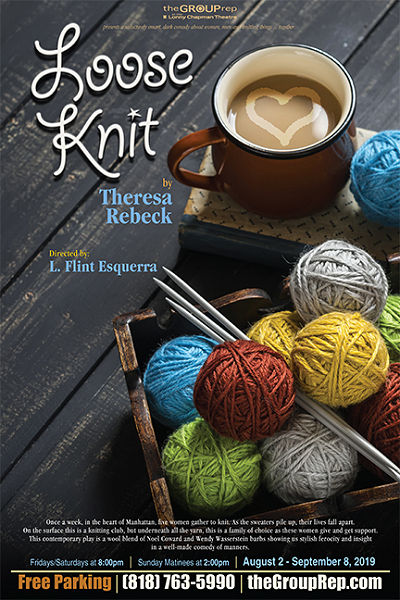
 Going in, you have to understand that my wife is into the fabric arts: knitting, needlepoint, cross-stitch, sewing, quiliting … almost anything other the crochet. Her obsession for the last few years has been knitting, and she’s been involved with a number of knitting groups, the longest being a group that knits over at A Major Knitwork in Van Nuys. So when an announcement came across my electronic transom about Loose Knit, a play by Theresa Rebeck (⭐FB) at The Group Rep (FB) in North Hollywood, a play that involved a knitting group, I was intrigued. I sent the following description to my wife to see if she was interested (and whether there was larger group interest):
Going in, you have to understand that my wife is into the fabric arts: knitting, needlepoint, cross-stitch, sewing, quiliting … almost anything other the crochet. Her obsession for the last few years has been knitting, and she’s been involved with a number of knitting groups, the longest being a group that knits over at A Major Knitwork in Van Nuys. So when an announcement came across my electronic transom about Loose Knit, a play by Theresa Rebeck (⭐FB) at The Group Rep (FB) in North Hollywood, a play that involved a knitting group, I was intrigued. I sent the following description to my wife to see if she was interested (and whether there was larger group interest):
“Once a week, in the heart of Manhattan, five women gather to knit. As the sweaters pile up, their lives fall apart. On the surface this is a knitting club, but underneath all the yarn, this is a family of choice as these women give and get support. This contemporary play is a wool blend of Noel Coward and Wendy Wasserstein barbs showing us stylish ferocity and insight in a well-made comedy of manners.
Needless to say, she was interested. Luckily, I had just gotten a Goldstar announcement on the show, so I grabbed two tickets (passing on seeing Weird Al at the Greek, but we saw him at the Bowl a few years earlier).
The show itself turned out to be relatively interesting. My wife observed afterwards that the knitting was essentially a McGuffin: It served to provide the context to bring this group of women together, but it could have been any device that did the same thing: a bridge club, a coffee klatch, a group of bingo regulars, etc. The knitting itself was peripheral to the plot; it was the relationships of the women that were key.
That said, my wife also noted that the portrayal of knitting groups was accurate: the groups become family, there is often intense family drama, and the members of the group care about and support each others. This, of course, leads to a side plug: If you knit, go to your FLYS (Friendly Local Yarn Store) and get involved in a knitting group. You can find one by looking at the folks involved in the annual yarn crawl, or on the website Ravelry.
The actual story centers around the women in the knitting group, and their relationships in and out of the group. At the center are two sisters: Lily (Stephanie Colet (FB)) and Liz (Marie Broderick (FB)). Liz is secretly having an affair with Lily’s husband Bob (Doug Haverty (⭐FB, FB)), using the knitting group as the excuse to run into him while bemoaning the guys that lie in the world. Margie (Julie Davis (FB)) is single and looking for the right guy, having just joined a singles group. Paula (Cathy Diane Tomlin (⭐FB, FB)), a therapist, is also looking for the right guy, but is jaded by the folks she’s met in her practice. The last member of the knitting group, Gina (Lisa McGee Mann (FB)), is a lawyer who, on the surface, just wants to knit and claims no problems, but is on the verge of a breakdown from those non-existent problems — but luckily she has a large yarn stash. Complicating matters is Miles (Todd Andrew Ball (FB)), a wealthy mergers and acquisitions guy, who keeps being set up with most of the members of the knitting group, and whose dates go spectacularly wrong.
 Generally, the segments that involve the women in the knitting group are the most interesting, where t hey are talking and interacting. Especially in Act I, the scenes involving Miles are cringe-worthy — not due to the performances, but just the nature of Miles and how much of a creep he is set up to be. Hang in there with respect to those scenes, for the Miles character finally makes sense in the final scenes on the show (although he still remains slime, just like his buddy “The Donald”, who is also mentioned in the show). Note that this play was written in the early 1990s, when men who behaved like this towards women (entitled, thinking their wealth allowed them to do anything) were common and accepted, The behavior that seemed perhaps innocuous then seems very problematic now, and is perhaps the most dated aspect of this play.
Generally, the segments that involve the women in the knitting group are the most interesting, where t hey are talking and interacting. Especially in Act I, the scenes involving Miles are cringe-worthy — not due to the performances, but just the nature of Miles and how much of a creep he is set up to be. Hang in there with respect to those scenes, for the Miles character finally makes sense in the final scenes on the show (although he still remains slime, just like his buddy “The Donald”, who is also mentioned in the show). Note that this play was written in the early 1990s, when men who behaved like this towards women (entitled, thinking their wealth allowed them to do anything) were common and accepted, The behavior that seemed perhaps innocuous then seems very problematic now, and is perhaps the most dated aspect of this play.
The one other thing that confused me about this play was the numerous references to Americans and the behavior of Americans. This might make sense if the knitting group was outside of the US, but for a Manhattan-based knitting group, why would they be running into people complaining about the behavior of Americans? It just made no sense, but was a minor distraction for the plot.
[📱 And speaking of minor distractions: Remember that the combination of silent mode 🔇 and airplane mode ✈ might not silence alarms, if they are set to ignore do-not-disturb. We learned the hard way, and apologize. Turn OFF your phones.]
But overall, we found the play to be reasonably funny and an accurate portrayal of knitting groups. The women seemed to genuinely care about each other, and the resolution at the end worked well. I think the play is well worth seeing, and it reminded us of the quality performances that come out of Group Rep (we were last at the theatre in 2016)
Under the direction of L. Flint Esquerra, the knitting group was believable, although it was clear that the actresses were a bit new to knitting. Remember, if B. D. Wong can knit, you can too. They seemed to inhabit their roles, and were comfortable around the needles. As noted earlier, the scenes with Miles were a bit more cringe-worthy, but that may be more of an issue with the writing vs. the performance. I’m not sure if there is a way to play them to lessen the cringe, but make the end reveal equal in strength.
As the sisters Lily and Liz, Stephanie Colet (FB) and Marie Broderick (FB) were strong and believable. I particularly liked Broderick’s Liz and the energy and attitude she brought to the role. Colet’s Lily was a bit more laid back, although her outburst at the end was particularly good.
Of the others in the knitting group, my favorite was Lisa McGee Mann (FB)’s Gina, especially when she had the breakdown at the end of Act I. I feel sorry for the poor stage managers who had to clean up and untangle the mess that she made! Her crawilng into the chest and covering herself in yarn was spectacular. Julie Davis (FB)’s Margie and Cathy Diane Tomlin (⭐FB, FB)’s Paula were also strong, especially in their interactions with Miles and the monologues and reactions afterwards.
Doug Haverty (⭐FB, FB)’s Bob came across as a generally nice and befuddled guy. For his role, one wonders how the perception of the story might shift with the casting. Haverty came across as a lovable schlub of an academic, but imagine if the role was played by someone buff, or with different characteristics. Would that have changed the audience perception of the relationship with Liz and Lily? In any case, Haverty played the role well.
This brings us to Todd Andrew Ball (FB)’s Miles. Sigh. Performance-wise, Ball captured the slime aspects of Miles well, and was convincing as the man to whom women were just a plaything, something to be bought with his money just like a fancy car or house, to be discarded when ultimately he got bored with them. Ball portrayed the character well; the problem was more that the writing of the character, while appropriate for when the play was written, was more jarring today.
Understudies were: Cynthia Bryant Paula U/S; Beccy Quinn (⭐FB) Margie U/S; Sandi Steinberg Gina U/S; and Sascha Vanderslik (⭐FB) Liz U/S.
Turning to the production and creative side: The set design by Chris Winfield (FB) worked reasonably well, although for some reason three of the women in the knitting group had remarkably similar apartments :-). Seriously, establishing the sense of place was done well, and the appropriate prop knitting pieces worked well (although someone was doing a lot of visits to Jo-Anns and Michaels for the yarns, and they must have had fun both re-knitting and re-rolling pieces between each performance). Angela M. Eads (FB)’s costumes worked reasonably well, although there were times where Margie’s costumes were a bit puzzling. JC Gafford (FB)’s sound design generally worked well, and Douglas Gabrielle‘s lighting design established time and place well. Stage manager Ariana Fernandez had her hands full with all the yarn to corral between scenes, so kudos to her and her uncredited team. Other production credits: JC Gafford (FB) Asst. Director; Doug Haverty (⭐FB, FB) Graphic Design; Nora Feldman (FB) Public Relations; Doug Engalla Photography/Videography; Katelyn Ann Clark (FB) Producer for Group Rep. Loose Knit was original presented as a workshop production at the Long Wharf Theatre 1992-09-15 (Arvin Brown, Artistic Director; M. Edgar Rosenblum, Exec. Director), and had its world premiere production at the Second Stage Theatre 1993-06-21 (Carol Rothman, Artistic Director; Suzanne Schwartz Davidson, Producing Director).
Loose Knit continues at The Group Rep (FB) in North Hollywood through September 8, 2019. Tickets are available through the Group Rep online. Discount tickets may be available through Goldstar.
✒
I like to say that I’m a professional audience, and that’s why I like theatre. I don’t have the creativity in me to inhabit other characters, and in general, the writing I do is limited to non-fiction — government documents and policies, highway pages, and reviews like these. I don’t have the ability to take an idea and turn it into characters and stories that might be compelling to an audience. I’m also a long time cybersecurity professional, and attending years of the Hollywood Fringe Festival has convinced me that the medium of the stage could be used to teach about cybersecurity in a way that audiences could learn, without being overwhelmed with technology. The notion I have is to take some broad cybersecurity themes and concepts and translate them into stories that could teach in a compelling way. But I don’t have the expertise to build a story out of the idea. If this is something that might interest you, please let me know. I don’t have funds for a commission or anything like that, but it might be something we could turn into a property beneficial for all.
🎭
Ob. Disclaimer: I am not a trained theatre (or music) critic; I am, however, a regular theatre and music audience member. I’ve been attending live theatre and concerts in Los Angeles since 1972; I’ve been writing up my thoughts on theatre (and the shows I see) since 2004. I do not have theatre training (I’m a computer security specialist), but have learned a lot about theatre over my many years of attending theatre and talking to talented professionals. I pay for all my tickets unless otherwise noted (or I’ll make a donation to the theatre, in lieu of payment). I am not compensated by anyone for doing these writeups in any way, shape, or form. I currently subscribe at 5 Star Theatricals (FB), the Hollywood Pantages (FB), Actors Co-op (FB), the Soraya/VPAC (FB), and the Musical Theatre Guild (FB). Through my theatre attendance I have made friends with cast, crew, and producers, but I do strive to not let those relationships color my writing (with one exception: when writing up children’s production, I focus on the positive — one gains nothing except bad karma by raking a child over the coals). I believe in telling you about the shows I see to help you form your opinion; it is up to you to determine the weight you give my writeups.
Upcoming Shows:
The next couple of weeks are quiet, but August ends with a double feature: Mother Road and As You Like It at the Oregon Shakespeare Festival (FB).
Early September is also mostly open. Then things heat up, with the third weekend bringing Barnum at Musical Theatre Guild (FB), and the fourth weekend bringing Blue Man Group at the Hollywood Pantages (FB). We start getting busy in October, starting with The Mystery of Irma Vep at Actors Co-op (FB). The next weekend brings Anastasia – The Musicalat the Hollywood Pantages (FB). The third weekend brings us back to the Kavli for The Music Man at 5 Star Theatricals (FB). October concludes with Mandy Gonzalez at the Soraya/VPAC (FB).
Looking to November, it starts with A Miracle on 34th Street – The Radio Play at Actors Co-op (FB), followed by Big Daddy the Band of 1959 at McCabes (FB) in Santa Monica.. The second weekend brings Summer at the Hollywood Pantages (FB) and The Goodbye Girl at Musical Theatre Guild (FB). November concludes with a hold for Bandstand at Broadway in Thousand Oaks. Somewhere in there we’ll also be fitting in Nottingham Festival and Thumbleweed Festival, if they are happening this year. Yes, there are a lot of open dates in there, but I expect that they will fill in as time goes on.
As always, I’m keeping my eyes open for interesting productions mentioned on sites such as Better-Lemons, Musicals in LA, @ This Stage, Footlights, as well as productions I see on Goldstar, LA Stage Tix, Plays411 or that are sent to me by publicists or the venues themselves. Want to know how to attend lots of live stuff affordably? Take a look at my post on How to attend Live Theatre on a Budget. Want to learn about all the great theatre in Southern California? Read my post on how Los Angeles (and its environs) is the best area for theatre in the Country!



 Yes, I know the quote really is “Too many notes”, and it applies to Mozart, but go with me here….
Yes, I know the quote really is “Too many notes”, and it applies to Mozart, but go with me here…. It should work. In fact, reading some reviews of other productions, I think it has worked elsewhere. But for me, aside from a few good lines, it was a little flat. I think the problem was two-fold. First, the long portions of exposition doesn’t serve the show well. The author needs a better way to get the audience into the context of the story than the artifice of all the letters, and they just serve to slow things down. Talk. Talk. Talk. This is theatre. There should be acting, not loads of monologues. Secondly, for farce to work it needs to be fast-paced and extremely well timed. It should hit you like a one-two punch, surprising you with one silliness before you’ve had time to process the last. This version was much too slow-paced, especially in the humor. The confusion at the various points needs to be amplified. The tempo needs to be upped, and that might even overcome the problem with the words.
It should work. In fact, reading some reviews of other productions, I think it has worked elsewhere. But for me, aside from a few good lines, it was a little flat. I think the problem was two-fold. First, the long portions of exposition doesn’t serve the show well. The author needs a better way to get the audience into the context of the story than the artifice of all the letters, and they just serve to slow things down. Talk. Talk. Talk. This is theatre. There should be acting, not loads of monologues. Secondly, for farce to work it needs to be fast-paced and extremely well timed. It should hit you like a one-two punch, surprising you with one silliness before you’ve had time to process the last. This version was much too slow-paced, especially in the humor. The confusion at the various points needs to be amplified. The tempo needs to be upped, and that might even overcome the problem with the words.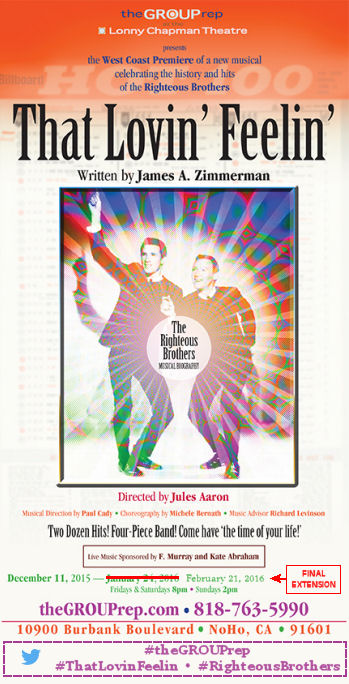
 I think what is disappointing is the missed potential in the story — in letting Bill and Bobby, and the people in their lives, re-enact and tell throughout instead of in snippets, of letting us see the growth of the characters in the characters themselves, and not by having a third character tell us. That is not to say that the scaffold is bad — for it certainly wasn’t. Rather, it could just have been so much more: a true dramatic story. On the other hand, a similar scaffolding of having a character tell the story worked for
I think what is disappointing is the missed potential in the story — in letting Bill and Bobby, and the people in their lives, re-enact and tell throughout instead of in snippets, of letting us see the growth of the characters in the characters themselves, and not by having a third character tell us. That is not to say that the scaffold is bad — for it certainly wasn’t. Rather, it could just have been so much more: a true dramatic story. On the other hand, a similar scaffolding of having a character tell the story worked for 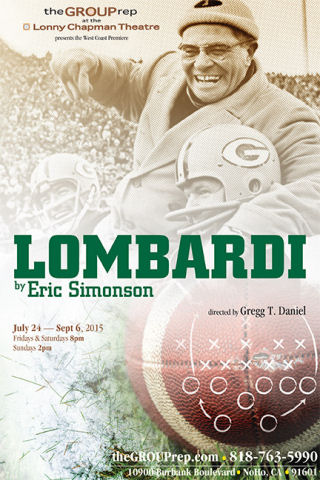
 In the fall of 2009 into the late summer of 2010, one of my favorite TV programs,
In the fall of 2009 into the late summer of 2010, one of my favorite TV programs,  Let’s talk a little about the actors and what they brought, and how their characters worked in the story. In the lead position was
Let’s talk a little about the actors and what they brought, and how their characters worked in the story. In the lead position was 
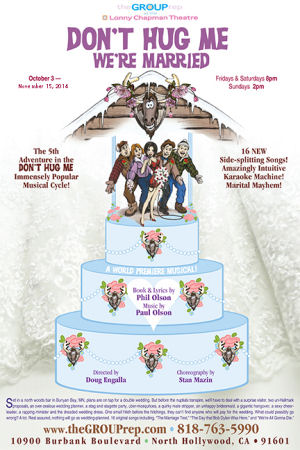
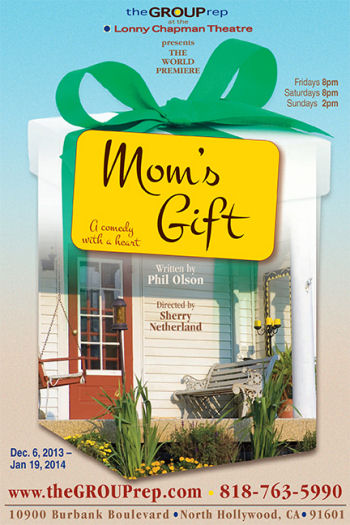
 Dealing with family isn’t easy in the best of circumstances. It is even harder in trying circumstances — such as when you have issues with family members and are forced to be with them. But, boy, does it make for a good play. That’s the underlying notion behind “Mom’s Gift“, the touching family comedy that we saw last night at the
Dealing with family isn’t easy in the best of circumstances. It is even harder in trying circumstances — such as when you have issues with family members and are forced to be with them. But, boy, does it make for a good play. That’s the underlying notion behind “Mom’s Gift“, the touching family comedy that we saw last night at the 